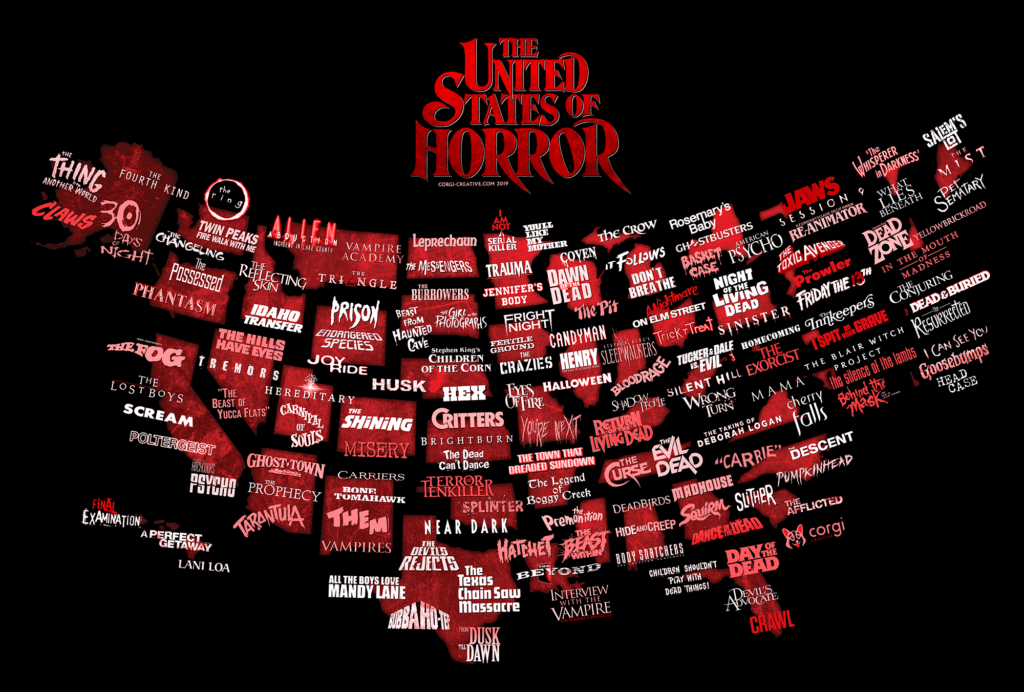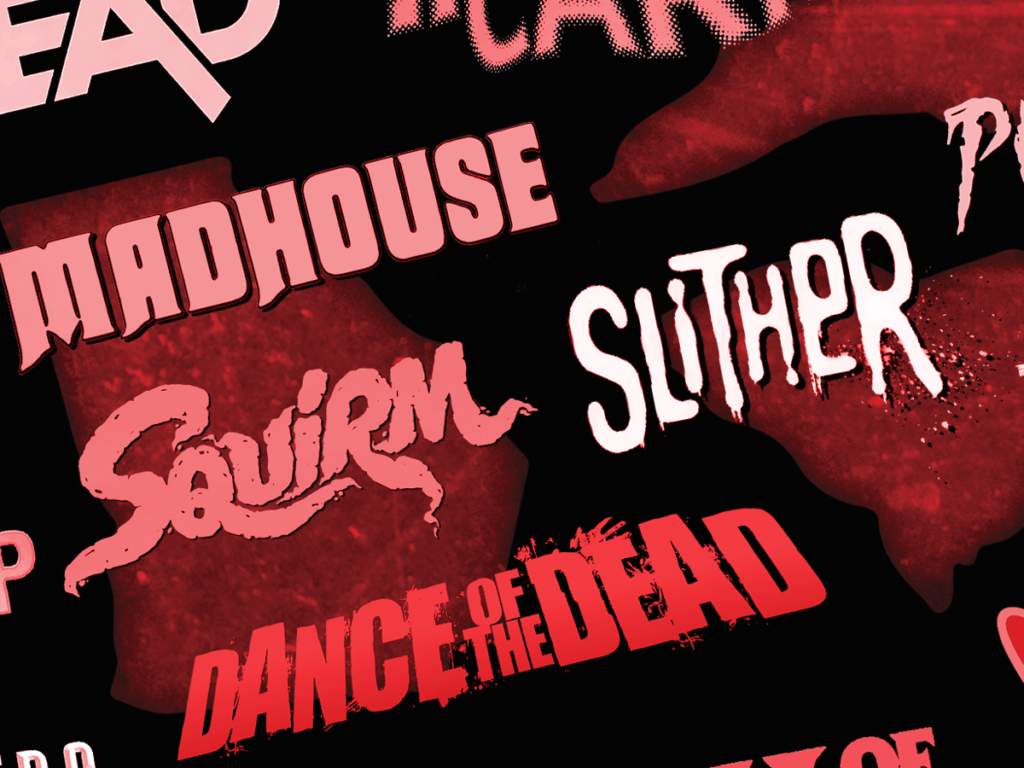
Note: Due to copyright issues surrounding use of film titles (many of which are now franchise logos) this image is not available for sale.
But they can’t stop you from printing it out at work.
As the tagline for Session 9 states of its real-life Danvers Asylum setting, “Fear is a place.” As a genre, horror tends to be concerned with space. It’s a genre of atmosphere and ambient menace — of looking deeply at surfaces of environments to find the cracks within. It’s hard to think of a horror flick that isn’t concerned with its setting, whether it be a mist-shrouded forest, a grimy maze of urban alleys, or a towering Victorian mansion.
In horror, history never really dies. It lingers in the environment like a contaminant, slowly polluting the world around it, like the coal fires of Silent Hill or the toxic waste of Tromaville. And the effect isn’t limited to the imaginary. The real-life cruelties of colonialism and slavery, the shocking tragedy of true crimes, the natural disasters and animal attacks, the inexplicable freak accidents, the bloodthirsty religious fervours – all soak the local soil in blood.
In the fullness of time this provides rich fodder for folklore and urban legends and, of course, horror stories. In a way that other genres do not, horror lets us grapple with the terrible truths of where we came from and where we stand – they let us see the ghosts that can’t be banished.
If this sounds like a pretentious preamble to nothing in particular, well… it is. But that’s the rationale behind this project: A horror map of the United States of America. It’s a collision of some of my favourite things: horror, typography and cartography. Here I pay homage to some of my favourite films and their classic posters.
This list is based on the settings of the films, rather than their location of shooting. For a film to be included on the map, it has to make some in-universe reference to the state in which it takes place. For instance, Brian de Palma’s Carrie and John Carpenter’s Halloween were both filmed in California, but the films take place in other states — thus marking Halloween for Illinois and Carrie for North Carolina. Similarly, Jaws is marked for Massachusetts, where fictional Amity Island is located, despite being filmed in New York state. There are dozens of other examples. A map based on shooting locations would indeed be totally different — and heavily skewed toward California.
Which movie ‘belongs’ to which state is the subject of some debate, because horror folks tend to be nerds, and I’m both. Some lists have claimed Psycho for Arizona due to its opening scenes, and others claim it for California, where the Bates Motel is located. The Silence of the Lambs takes place across the borders of multiple states. In these instances I’ve tried to split the difference, as well as adding enough films that residents of each state won’t feel cheated by an omission.
Of course, it’s impossible to include every important horror film from each state. California has enough to fill a whole map by itself. So there are sadly some significant omissions. When possible I’ve tried to represent different types of horror films on offer, so that one subgenre such as slashers or zombies or monster movies doesn’t crowd out the others in any given state, or on the list in general.
Some states simply have slim pickings when it comes to horror flicks, requiring deeper dives into lesser-known territory. This has resulted me including some rare gems, such as Lani Loa and The Dead Can’t Dance. In addition to being educational research for myself, I think this helps shake up the list, showing a broad spectrum within the horror genre rather than being simply another display of acknowledged canon. Obscure, underground, and forgotten films are as important to the genre as the classics. Every horror fan’s shelf should have a pile of films that only five other people have seen and only one enjoyed.
Further, I make no claims to the quality of every film on the list. Some of them are classics, and others… are not. Some of them I haven’t seen. Some merely have a cool logo, as far as this image goes. But you know what they say: Every movie is someone’s favourite movie. This is even more true when it comes to regional pride — so they all deserve to be here, and more.
As for the big question, are these all horror flicks? Some have made a case for Deliverance for Georgia (which I haven’t included), and some others may not consider Ghostbusters or Vampire Academy to be horror enough for the list. But I think the latter two have a certain genre fidelity or spirit of horror that Deliverance doesn’t, even though Deliverance is the most grueling watch of the three. Similarly, some lists have included Close Encounters of the Third Kind to represent Wyoming, but I’ve switched it out for the more horror-based Endangered Species instead. A lot of this rationale, as with all lists and all genre barriers, is totally subjective. It won’t please everyone, and it can’t.
Visually, this map is mostly a showcase of horror typography, so when selecting sources for inclusion such as film posters, I went with the most appealing type I could find across various regional posters and marketing materials. This was naturally easier to do for older films, with their beautiful and unique hand-lettering, rather than the abundance of Trajan and Garamond we see today.
Shout-out also to New England for throwing off every possible balance of state sizes when it comes to making maps like this. Oh well. As long as they keep us awash in Stephen King and H.P. Lovecraft classics, I won’t complain.
The original is in very high resolution. Finding and finessing the appropriate resources required a lot of time and patience, as you can imagine…

